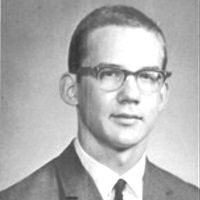
by Victoria Silverwolf
The most inspiring news this month, at least for anyone interested in humanity's first tiny steps away from our home planet, was the fact that Soviet cosmonaut Valentina Vladimirovna Tereshkova became the first woman in space. She orbited the Earth forty-eight times aboard Vostok 6, landing safely after nearly three days inside the tiny spacecraft.

This was certainly a welcome distraction from the continuing battle in the United States over civil rights. On June 11, Governor George Wallace stood in the doorway of Foster Auditorium at the University of Alabama in an attempt to block desegregation of the school. Only after the National Guard arrived to remove Wallace did he step aside.

The next day, in Jackson, Mississippi, NAACP activist Medgar Evers was murdered, shot to death in his driveway.
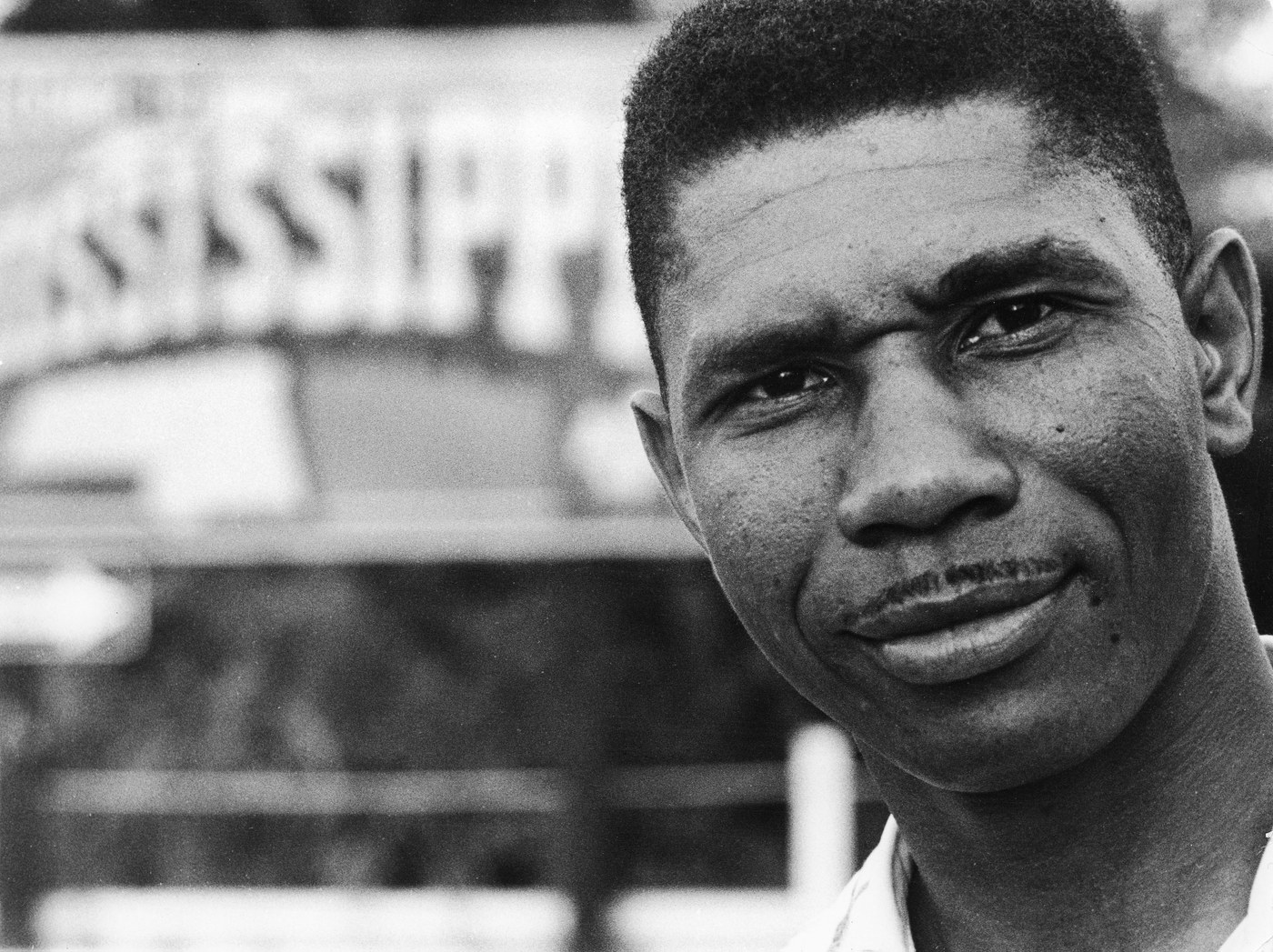
The same day, President Kennedy addressed the nation on the subject of civil rights.
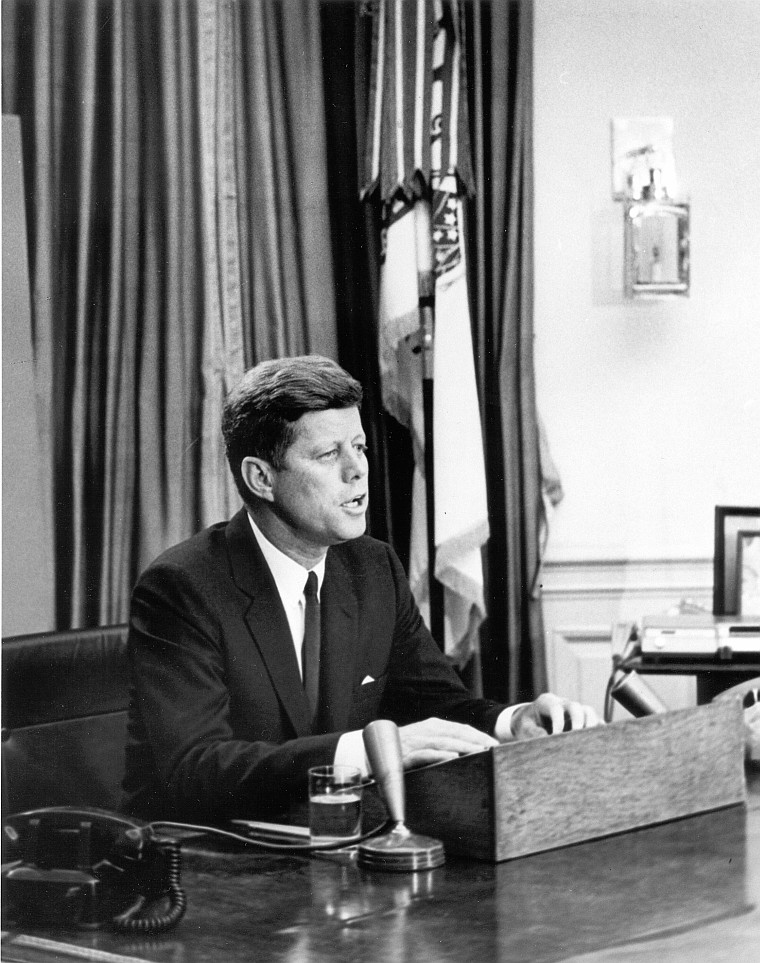
It ought to be possible for American consumers of any color to receive equal service in places of public accommodation, such as hotels and restaurants and theaters and retail stores, without being forced to resort to demonstrations in the street, and it ought to be possible for American citizens of any color to register and to vote in a free election without interference or fear of reprisal.
Let us hope that all Americans take these words to heart.
Those of us wishing to escape from this distressing conflict can go out to a movie theater and spend four hours watching Cleopatra, said to be the most expensive film ever made.

We can also enjoy the novelty of listening to Japanese crooner Kyu Sakamoto singing Ue o Muite Arukou (I look up as I walk). Despite having been given the inappropriate English title Sukiyaki, this lovely, gently melancholy tune has reached number one on the US music charts.

And in the vein of literary distractions, one can do worse than a science fiction magazine. Given Tereshkova's recent achievement, it's appropriate that the latest issue of Fantastic features a pair of firsts from women.
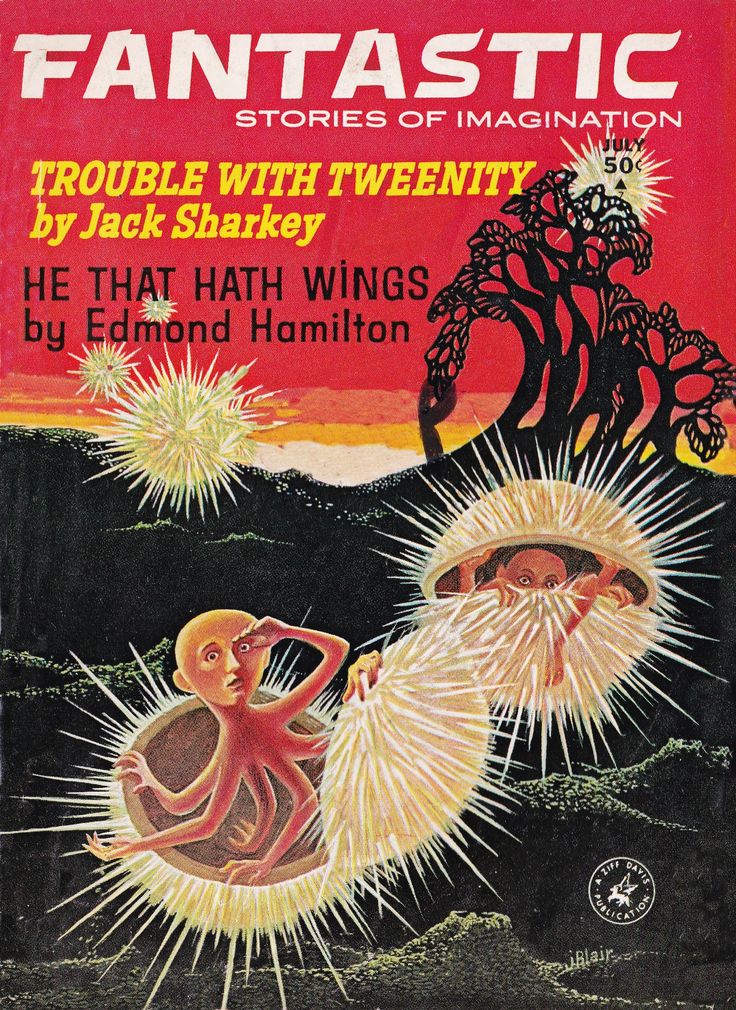
Artist Jacquelyn Blair, who has previously done interior illustrations for editor Cele Goldsmith's magazines, provides the cover art. Not only is this the first time she has moved from the inside. This is also the first time she has received credit under her full name. Earlier issues simply listed her as Blair. This seems to be standard practice for interior artists, so I don't think it was an attempt to hide her sex.
Blair is not the first woman in her field. Perhaps the most famous female illustrator of fantastic fiction is Margaret Brundage, who provided many covers for Weird Tales. In any case, Blair's cartoonish cover properly matches the mood of the magazine's lead story…
The Trouble with Tweenity, by Jack Sharkey
A scientist discovers that an infinite number of worlds exist between normal matter and antimatter. To solve the near future's extreme traffic congestion, the President of the United States uses devices that allow people to travel to these worlds. All sorts of problems result. Attempts to solve these dilemmas lead to further complications.
Typical for the author, this is a silly farce. The science is complete nonsense, even for a comedy. Much of the story is pure exposition. One or two jokes provide mild amusement. Two stars.
He That Hath Wings, by Edmond Hamilton

This month's reprint comes from the July 1938 issue of Weird Tales. A baby is born to a woman who dies in childbirth. She and the infant's father, already dead, were exposed to radiation in an electrical explosion. The child has hollow bones and special muscles to control the wings he develops. He grows into a man who can fly. He falls in love with a woman who returns his affection, but cannot allow herself to marry someone the world thinks of as a freak. The man must choose between flight and romance. Sacrifice and tragedy follow.
Although this story begins in the old-fashioned style of pulp fiction, it soon becomes poetic. The author's descriptions of the joy of flying are particularly effective. A minor quibble is that the scientific explanation for the man's mutation is not convincing. This emotionally powerful tale would have been even better as pure fantasy. Four stars.
A Hoax in Time (Part 2 of 3), by Keith Laumer
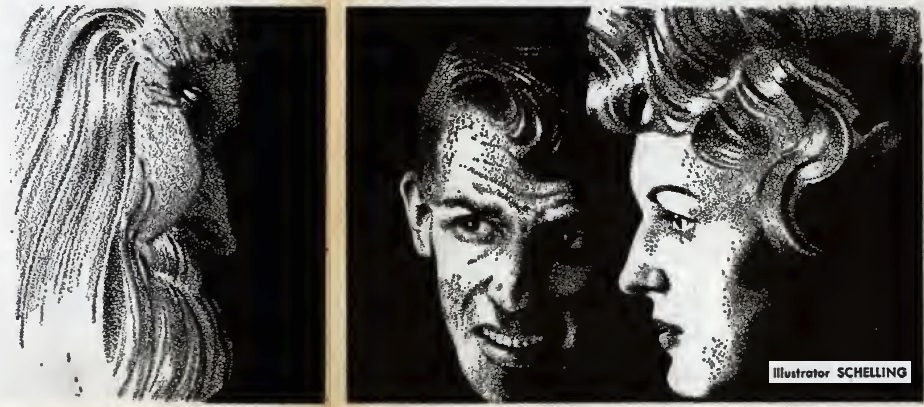
In the first part of this serial, our three protagonists – a wealthy idler, a carnival performer, and a robot in the form of a beautiful young woman, created by a super-computer – wound up in the remote past. The idler and the robot escaped. In this installment, they return to rescue the performer, only to find that thirty years have gone by. While waiting for the others, he helped the savage people of the past progress into healthy, self-reliant individuals. When the three go back to their own time, they find that his efforts have changed the present. In particular, the super-computer no longer exists, leaving them unable to journey through time again and put things back the way they were.
This part of the novel is less comic than the first. It also has less action and more talk. The author creates an interesting alternate version of reality. Although the world he depicts has its flaws, it seems intended as a functioning libertarian society. The author's philosophy also comes through in the final section of this installment, when the idler goes through an intense training program of self-discipline in order to become a valuable member of his new home. The story is never boring, even when it becomes nothing more than a discussion of ideas. The performer's ability to bring technology to the prehistoric people, in the manner of Mark Twain's A Connecticut Yankee in King Arthur's Court, strains credibility. Three stars.
The Recurrent Suitor, by Ron Goulart
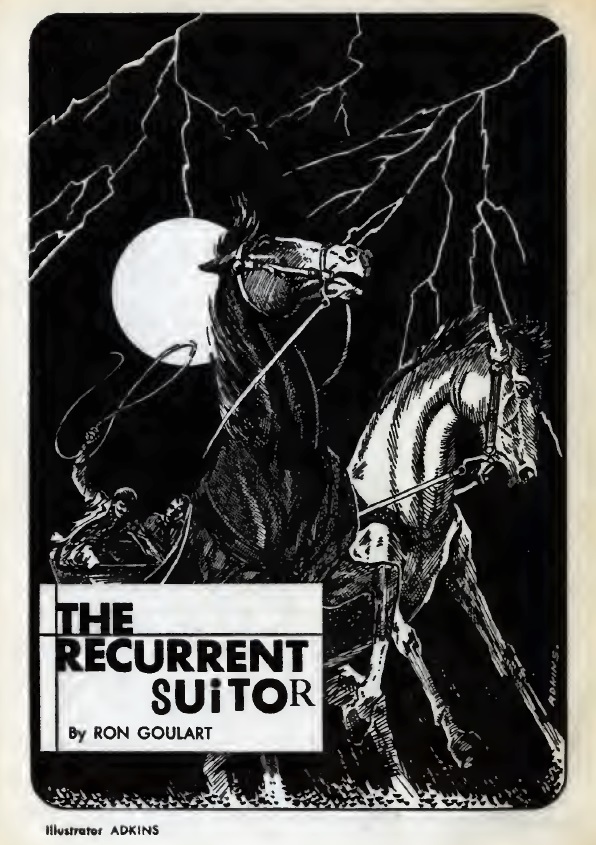
This is a sequel to last month's story Plumrose. The narrator, a man of 1961, is still stuck in 1897. The occult detective Plumrose brought him there with a time ray. He serves as the detective's reluctant assistant until Plumrose can repair the time ray. In this story, the mismatched pair help a young man rescue his fiancée from a family curse. As with the previous story, this is a light comedy, poking fun at old-fashioned Gothic fiction. Three stars.
A Contract in Karasthan, by Phyllis MacLennan
This is the first published story by the author, and one hopes that it will not be the last. A man journeys around the world in search of the magical place for which he yearns. When he finds it, he must decide whether to remain or return to mundane reality. This is a delicate, moody, dream-like fantasy. It has the flavor of a myth. The author's elegant style casts a spell over the reader. Five stars.
Final Audit, by Thomas M. Disch
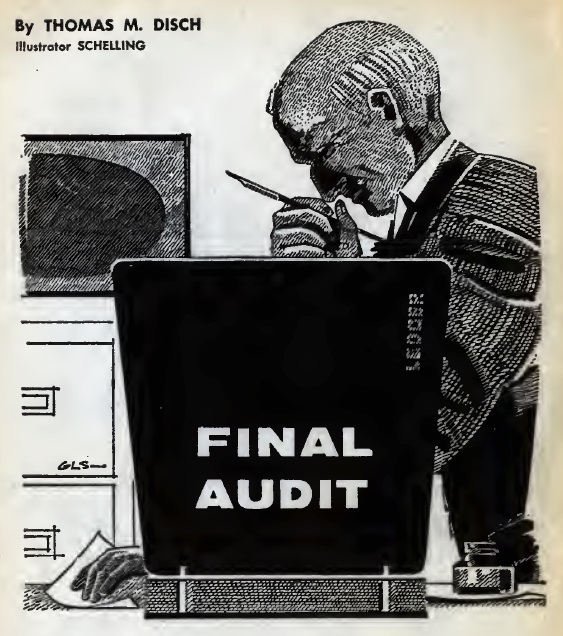
In the Nineteenth Century, a clerk has a peculiar form of precognition. Although he fills out a book of postal expenses one month after the actual transactions, he can see one month ahead. In other words, he knows what he is going to write in the book one month in the future, dealing with the expenses made on the day he sees them. This strange ability seems useless, since it deals with such trivial matters. Over many years, the clerk tries various ways to turn this to his advantage, without luck.
This is an unusual story, written in a deliberately old-fashioned style. Although it is not a comedy, one can't help feeling that the author has his tongue firmly in his cheek. Although the ending is predictable, the portrait of a life wasted in pursuit of an impossible goal is effective. Three stars.

All in all, it has been a banner month for women in science and science fiction. Let's hope that Tereshkova, Goldsmith, Blair, and MacLennan continue to serve as role models for other pioneering women, in the far reaches of outer space or deep within the human imagination.


